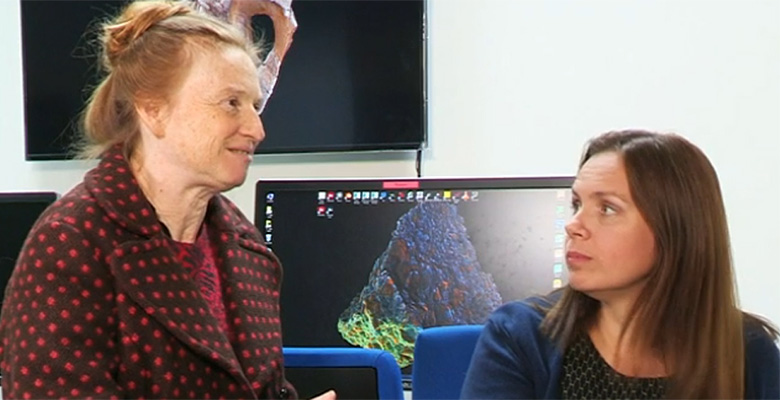Piltdown Man research on primetime TV

LJMU’s Dr Isabelle De Groote appeared on the BBC’s primetime hit TV programme, The One Show, during a special feature on the famous Piltdown Man forgeries.
The Piltdown Man is one of history’s most surprising archaeological hoaxes. Fragments of a skull, set of teeth and a jawbone found in Piltdown, East Sussex, between 1912 and 1914, were initially thought to be the missing link between man and ape; allegedly proving that Darwin’s Evolution of Theory was correct.
The One Show focussed on a recent analysis of the forgeries, conducted by Dr De Groote and others, which points the finger of suspicion even more firmly at their discoverer, Charles Dawson.
Published 100 years on from Dawson’s death, the research revealed that the forgeries were created using a limited number of specimens that were all constructed using a consistent method, suggesting the perpetrator acted alone.
It is highly likely that an orang-utan specimen and at least two human skeletons were used to create the fakes, which are still kept at the Natural History Museum.
Museum palaeontologist Arthur Smith Woodward and the amateur antiquarian Charles Dawson announced the discovery of fossils from Piltdown. These were supposedly a new evolutionary link between apes and humans. They indicated a species with both an ape-like jaw and a large braincase like a modern human. Before he died in 1916, Dawson claimed to have discovered further evidence at a second site.
The forgeries helped misdirect the study of anthropology for decades. While doubts were raised from the start, it took 40 years for the scientific community to recognise that the remains had been altered to seem ancient and had been planted in the sites.
The research, first published in Royal Society Open Science, was undertaken by a multi-disciplinary team led by Liverpool John Moores University working with other institutions in London, Cambridge and Canterbury. They used the latest scientific methods to test the Piltdown specimens to uncover more about how the forgery was done.
DNA analyses showed that both the canine from the first Piltdown site and the molar from the second site probably came from one orang-utan, related most closely to orang-utans now occupying south-west Sarawak (Borneo). In addition, the shape and form of the molar from the second Piltdown site was almost certainly from the other side of the jawbone planted in the first site.
Dr Isabelle De Groote from LJMU's Department for Natural Sciences and Psychology, and lead author on the paper, thinks the results point to a clear conclusion: "Although multiple individuals have been accused of producing the fake fossils, our analyses to understand the modus operandi show consistency between all the different specimens and on both sites. It is clear from our analysis that this work was likely all carried out by one forger: Charles Dawson."
Read the full story on this research.


